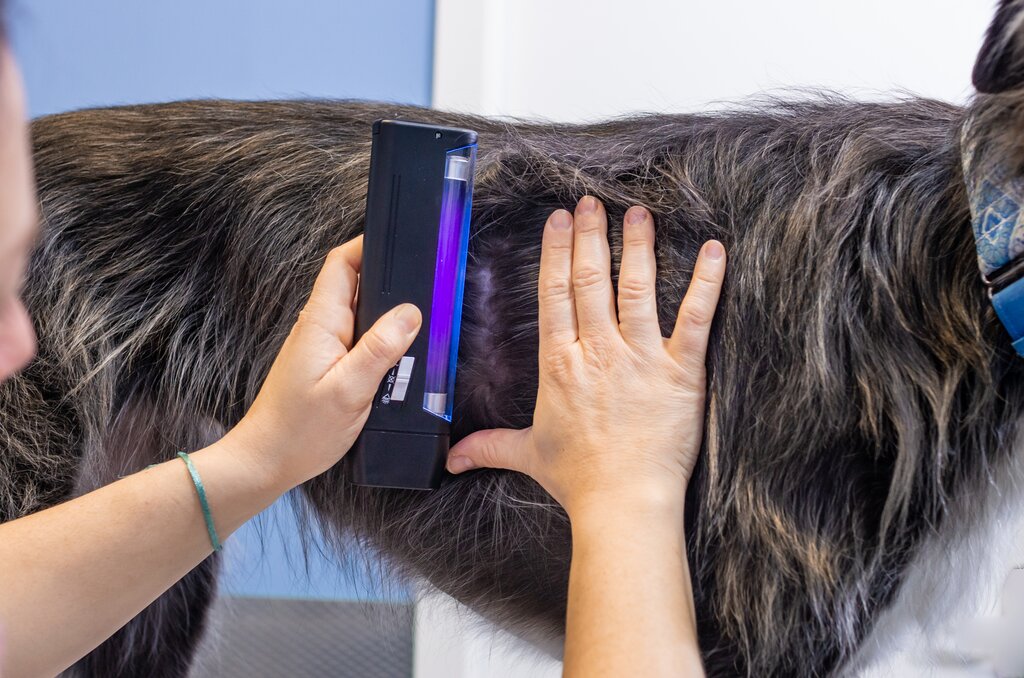What is ringworm?
Despite the name, Ringworm is not actually a 'worm', but a fungus. (Perhaps a more fitting name would be 'Ringus'!). When we talk about 'ringworm', we are usually referring to the infection caused by the fungus, rather than the fungal organism itself.
The fungal pathogen responsible for ringworm is a commensal organism found on healthy skin, but only causes disease when it grows in too great a quantity, or if the skin or immune system is comprimised and can't fight it off. The pathogen that causes ringworm is also responsible for 'athlete's foot'.
In dogs, about 98% of ringworm cases are caused by a species of fungus called Microsporum canis, however it may be caused by any species of Microsporum, Nannizzia, or Trichophyton fungi.2
How do dogs get ringworm?
The Ringworm fungus spreads easily in the environment. It is primarily spread via contact with an infected host (be it canine, human, or another mammal such as a cat) and by touching contaminated objects like furniture, towels or grooming tools. Broken hairs that contain the fungal spores are a common source of spreading ringworm, and spores may survive in the environment for up to a year.1
As with many diseases, direct contact does not always result in infection. The development of lesions depends on host factors - particularly age, immune system health, skin quality, hygeine, and nutrition. This is why the disease is commonly seen in puppies, pregnant dogs, or those with skin allergies. Likewise, children, pregnant women, the elderly, and immunocompromised people (such as those with HIV or eczema) are more commonly affected.
Where did my dog catch ringworm? As stated previously, the Ringworm fungus is a commensal organism that grows on the skin naturally, so your dog may have been exposed anywhere or from anywone. However, dogs are often exposed to larger quantities of the fungus in environments such as a shelter, dog kennels, pet store or breeder - which may concurrently be a stressful environment for your dog and therefore compromises their already fragile immune system.
Can humans catch ringworm?
Ringworm is transmissible between pets and humans. While dogs can transmit ringworm to humans, in fact, many dogs are actually infected by children in the household who have been infected at school or day care. (And unfortunately, often the dog is blamed for passing it to the child, rather than the other way around!)
If you or your child has been diagnosed with ringworm infection, don't panic - the disease is fairly easy to treat. (See our treatment section below)! You certainly shouldn't get rid of your dog or remove them from your house temporarily - this may only stress your dog and therefore make them less likely to recover.
Remember that a strong immune system can usually fight off ringworm fungus on its own, so never under estimate the power of good nutrition, rest, probiotics for dogs, and Omega fatty acids (such as fish oil) alongside medical and environmental treatment!



